I am writing a code to solve second-grade equations and it works just well. However, when I input the following equation:
x^2 + (10^(20) + 10^(-20)) + 1 = 0
(Yes, my input is 10**20 + 10**(-20)
I get:
x1 = 0
x2 = -1e+20
However, it is taking (10^(20) + 10^(-20) as 10e+20 while, if you do the math:
Here is the LaTeX formatted formula:
Which is almost 10^20 but not 10^20.
How can I get the exact result of that operation so I can get the exact value of the equation in x2?
My code is the following:
#===============================Función para obtener los coeficientes===============================
#Se van a anidar dos funciones. Primero la de coeficientes, luego la de la solución de la ecuación.
#Se define una función recursiva para obtener los coeficientes de la ecuación del usuario
def cof():
#Se determina si el coeficiente a introducir es un número o una cadena de operaciones
op = input("Si tu coeficiente es un número introduce 1, si es una cadena de operaciones introduce 2")
#Se compara la entrada del usuario con la opción.
if op == str(1):
#Se le solicita el número
num = input("¿Cuál es tu número?")
#Se comprueba que efectívamente sea un número
try:
#Si la entrada se puede convertir a flotante
float(num)
#Se establece el coeficiente como el valor flotante de la entrada
coef = float(num)
#Se retorna el valor del coeficiente
return coef
#Si no se pudo convertir a flotante...
except ValueError:
#Se le informa al usuario del error
print("No introdujiste un número. Inténtalo de nuevo")
#Se llama a la función de nuevo
return cofa()
#Si el coeficiente es una cadena (como en 10**20 + 10**-20)
elif op == str(2):
#La entrada se establece como la entrada del usuario
entrada = input("Input")
#Se intenta...
try:
#Evaluar la entrada. Si se puede...
eval(entrada)
#El coeficiente se establece como la evaluación de la entrada
coef = eval(entrada)
#Se regresa el coeficiente
return coef
#Si no se pudo establecer como tal...
except:
#Se le informa al usuario
print("No introdujiste una cadena de operaciones válida. Inténtalo de nuevo")
#Se llama a la función de nuevo
return cofa()
#Si no se introdujo ni 1 ni 2 se le informa al usuario
else:
#Se imprime el mensaje
print("No introdujiste n ni c, inténtalo de nuevo")
#Se llama a la función de nuevo
return cof()
#===============================Función para resolver la ecuación===============================
#Resuelve la ecuación
def sol_cuadratica():
#Se pide el valor de a
print("Introduce el coeficiente para a")
#Se llama a cof y se guarda el valor para a
a = cof()
#Se pide b
print("Introduce el coeficiente para b")
#Se llama cof y se guarda b
b = cof()
#Se pide c
print("Introduce el coeficiente para c")
#Se llama cof y se guarda c
c = cof()
#Se le informa al usuario de la ecuación a resolver
print("Vamos a encontrar las raices de la ecuación {}x² + {}x + {} = 0".format(a, b, c))
#Se analiza el discriminante
discriminante = (b**2 - 4*a*c)
#Si el discriminante es menor que cero, las raices son complejas
if discriminante < 0:
#Se le informa al usuario
print("Las raices son imaginarias. Prueba con otros coeficientes.")
#Se llama a la función de nuevo
return sol_cuadratica()
#Si el discriminante es 0, o mayor que cero, se procede a resolver
else:
#Ecuación para x1
x1 = (-b + discriminante**(1/2))/(2*a)
#Ecuación para x2
x2 = (-b - discriminante**(1/2))/(2*a)
#Se imprimen los resultados
print("X1 = " + str(x1))
print("X2 = " + str(x2))
sol_cuadratica()
Ignore the comments, I'm from a Spanish-speaking country.
